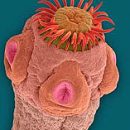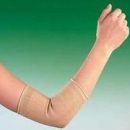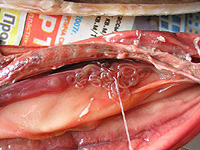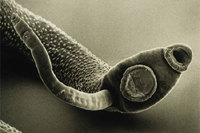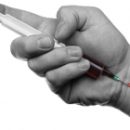What is cysticercosis? As the disease is manifested? What are the diagnosis and treatment of cysticercosis? Answers to these questions can be found in the article.
Content
Cysticercosis
Cysticercosis is the most common
parasitic disease of the central nervous system. Infection of the central nervous system with larvae of a pork chain
Taenia Solium occurs when eating food, infected eggs
Gelming.
How cysticercosis is manifested
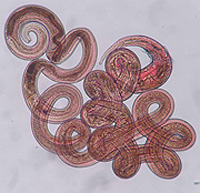
Cysticercosis can pass asymptomatic
Or cause one or more neurological syndromes: epilepsy,
hydrocephalus, stroke, chronic basal meningitis (Inflammation of the shells of the head and spinal cord), dementia (Acquired form of dementia),
Encephalitis (brain inflammation), acute chemical meningitis. Spinal cord and retina
Amazed rarely. The disease is typical for Mexico,
Central and South America, Eastern Europe, China and Southeast
Asia. In patients with cysticercosis of the brain there may be no signs
intestinal lesions by an adult form of helminth, and in feces may not
Detected eggs or parasites themselves. Eosinophilia (an increase in the number of eosinophils in the blood) is observed
seldom.
Diagnosis of cysticercus
Cysticercosis can be assumed based on
epidemiological data and results of computed tomography, at which they usually identify
Outbuilding foci or liquid filled with liquid parenchymal cysts.
Contrast accumulation takes place in the active phase when the death of the larvae
causes inflammation and swelling. Intragastric cysts can lead to
threatening life of hydrocephalius (Excessive accumulation of fluid contained in the cavities of the brain). With a computed tomogram, they are usually not visible; more
Informative Magnetic Resonance Tomography. The diagnosis is confirmed if in serum
Anticycristic antibodies are found. Due to the threat of reinfection (re-infection)
patients and their relatives need to explore feces.
How to treat cysticercosis
- Prazikvantel, 50 mg / kg / day inside in 3 receptions for 14 days, kills viable larvae at the stage of active invasion
- Albendazole, 15 mg / kg / day in 3 receptions for 21 days, more
effective in the treatment of parenchymal and subarachnoid
Neurocystserkoza
- Analgesics and anticonvulsants are appointed by testimony
- In case of inactive neurocysticosis, chemotherapy is not shown,
because there are no living larvae at this stage. Signs of the active stage -
swelling and accumulation of contrast in cysts according to computer tomography or magnetic resonant tomography
- Testimony to remove cysts limited. Operation is usually,
are carried out with a dubious diagnosis, with rapidly growing cysts in
fourth ventricle or threatened. With uncomfortable
hydrocephalius caused by intraventriced cysts, effectively
Shunting, which is carried out without removal cyst.

